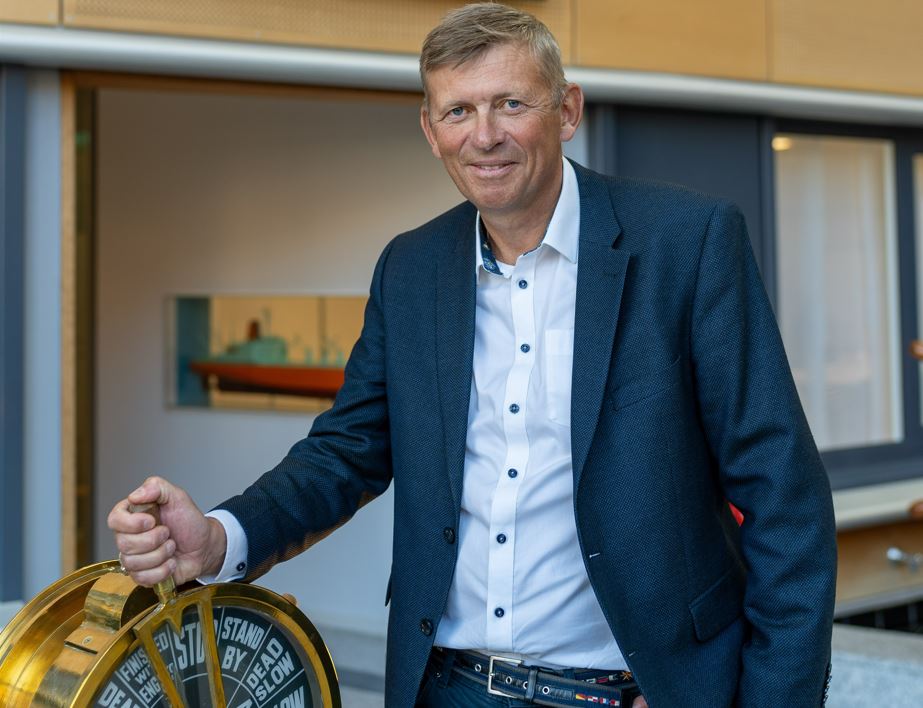“We see the captains starting their voyage very fast – they're running at high speed in the beginning, securing margin. Then towards the end you get pretty inefficient steaming towards the arrival port,” says Geir Fagerheim, SVP for marine operations at Wallenius Wilhelmsen: “That's the human behaviour and the psychology there; they don't want to be late for that arrival,” he tells The Stack -- behaviour that's increasingly expensive.
Wallenius Wilhelmsen operates more than 130 vessels which ply trade routes all around the world, shipping cars and other vehicles, along with complex cargoes such as factory equipment (or entire factories). In common with any other shipping company, one of the biggest challenges Wallenius Wilhelmsen faces is cutting its fuel bill.
When it comes to voyage optimisation – picking the best course and speed for the journey – the ships’ captains don’t have the tools to make informed decisions, explains Fagerheim. This is why they go hard and fast at the start of the journey, because they can’t predict later conditions. This is where Athens-based startup DeepSea and its AI-powered voyage optimisation platform comes in.

Its pitch to the shipping company was simple: use deep learning to incorporate weather and ship data to produce an optimal set of directions, both to save fuel and reduce CO2 emissions – initially on four vessels in WW’s fleet. But the implementation was much more challenging; the physical work of installing scores of sensors into a ship was “quite substantial” and required bespoke solutions, as well as upgrading equipment which couldn’t supply reliable data.
Ships also needed sensors for their engines, generators, propeller shafts, GPS and navigation equipment, fuel meters and more. But the real challenge came when Wallenius Wilhelmsen started to collect the data, explains Fagerheim.
“We saw very early on – we really started broadly and wanted to acquire all data on board a ship. And suddenly we had 10,000 data points in our database, and needed to make sense of that – a lot of it was pure alarm signals. The big job is really to narrow it down to a meaningful set of data, and have control of those.”
The next challenge was getting the data processed and off the ship; for this Wallenius Wilhelmsen is using data acquisition units from Raa Labs – essentially edge computers – on its vessels, which can optimise the sensor data. This consists both of compression, and techniques such as truncating long readouts, “for instance, removing 20 digits after the decimal if you only need one”.
Some data points, such as the vessel’s draft, do not require frequent updates, while others need to be recorded up to 50 times a second. But once all of these are aggregated, they are bundled into one-minute snapshots of the ship’s status, and transmitted to WW’s corporate Azure cloud – with some degree of tolerance for poor connectivity.
'Make a u-turn'
“The transfer of that data to shore, to the cloud, is important to happen often enough that you can check in the case of route optimisation or voyage optimisation,” explains Roberto Coustas, CEO and co-founder of DeepSea, comparing it to Google Maps recalculating a route if a driver makes a wrong turn.
“If there's a big time lag, and you find out eight hours later that this whole time the suggestion has not been followed, then there isn't a lot you can do.”
The other reason to maintain a near-real-time stream of data from a ship is to keep informing and training the shipping AI model, says Coustas: “If anything changes in its performance or behaviour, that is taken into account immediately. So let's say that the vessel for some reason remains idle for some time, and therefore is fouled. And in the next voyage, we are aware of that information – we use the vessel’s current state in order to help optimise for underwater currents or wind.”
Much of the work DeepSea has done on its shipping AI model is working out what data is actually useful – and then, when it comes to a customer implementation, making sure it’s right he says: “There are 10,000 tags, but there are, let's say, 20 tags that are important for this project. And we make sure that these 20 tags are accurate. If there is any at fault in the flow meter [for example], that needs to be fixed before the data is usable for an AI model.”
Coustas explains that what makes DeepSea’s product genuine AI rather than a simple algorithm is “the model learns the behaviour of the vessel from the data, without making any assumptions”.
I am the very model of a modern AI dataset
Instead of using a model of how a ship should behave, the system only uses real data, and continually develops and adjusts its modelling of how a vessel will behave. When starting from scratch, Coustas says this process can take several months – but for fleets with similar vessels, such as Wallenius Wilhelmsen, which operates several sister ships, the system can use “model adaptation” to take real data from one ship and use that in another’s model.
“And then it uses that learning to then use an algorithm to optimise a future voyage. So then you say, okay, I want to go now from port A to port B – perfect, the model can simulate very accurately every possible scenario, so every possible route and speed combination, to arrive at that point, and provide the end user with the best possible option to minimise CO2 consumption, and fuel consumption as well.”

Integrating thousands of datapoints from snapshots with complex weather and current data is unsurprisingly computationally intensive. DeepSea uses AWS for its compute loads, but Coustas says the company has a research team focused on the storage and optimisation of data and training the models, and making sure this is efficient.
“Because if it's done inefficiently, then it's actually very, very expensive to do so on the cloud. I mean, the computing power, the raw computing power is just immense. So you have to very cleverly make sure, how do I recreate this in a way that is efficient and the way that creates optimisation?” he explains.
You would be forgiven for thinking that, after the effort of acquiring the data and training the shipping AI model, everything would be smooth sailing. But according to Fagerheim, in the limited four-ship trial Wallenius Wilhelmsen has done so far, compliance rates for crews following the recommendations of the DeepSea model was only around 30%.
“Still, that showed us a potential of some 7% gains and improvements in the fuel consumption. That's why we're pretty confident in saying that if we get the learning, get the confidence, and get the whole organisation to work along this and improve that level of compliance, we expect somewhere in the range of 10% in total,” he says.
Using voyage optimisation will also help keep the fleet’s operations running to schedule: “As we gain confidence, and as the masters and captains get confidence in this actually supporting them well, then you actually improve the precision, and you improve the waste on every single transit we do in the network.”
Full steam ahead for shipping AI
The next phase of the voyage optimisation project will be to fit out the rest of Wallenius Wilhelmsen’s fleet, aiming to have sensors and data collection up and running on another 65 vessels by the end of 2022, then another 55-60 in 2023. Fagerheim points out implementation will also need to involve the company’s on-shore operations – not to mention training on the shipping AI for the crews operating the ships.
The firm also has plans to expand its use of the newly-acquired data, he says: “We have a few more high impact use cases where it's about giving the crew, the guys on the frontline, better decision support and advice in how they can optimise their operation. We also have a big programme on retrofits of hardware and equipment onboard the ships. So that's all about improving marginal effects that are possible to gain. So improving, say propellers and various underwater devices.”
Some of those use-cases include real-time engine optimisation – Fagerheim says ship engines are “rather primitive” compared to cars in terms of how much monitoring happens within the engine – and predictive maintenance, aiming to ensure vessels are brought in for repair before an equipment failure, rather than afterwards. This will require “high resolution data”, and presumably a significant investment in modelling and compute power to match.
Another significant application is ship safety, he says: “When we have motion sensors on all our ships, and also, if we can come to the stage where we have predictive motion analytics, it will also definitely be a big step in improving the safety of ship. There's a lot of cargo, especially in the container sector, being lost at sea. But also our type of ships have sensitive cargo, and the ability to combine this also with motion prediction analytics, and avoid harmful motions is definitely one use-case.”
Right now Wallenius Wilhelmsen is focusing on its stated goal to cut its CO2 emissions by 27.5% compared to its 2019 levels (which, according to Fagerheim, were already 32% lower than its emissions in 2008). Given burning fuel makes up the bulk of these emissions, this is a happy scenario where commercial and environmental interests coincide – and where shipping AI initiatives such as voyage optimisation benefit everyone.
“What we're doing here, we believe our claim to be the first one out there at this scale. But I'm quite sure this this will in five years’ time be mainstream. Because companies can't really afford not to tap into this potential,” Fagerheim says.









